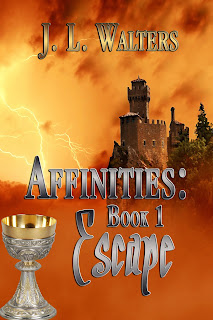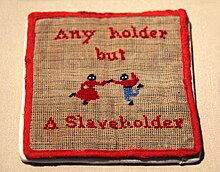The Urn of Fate
Pedro
tossed a stone down the hill and sighed. He felt a tugging at his woolen scarf
and turned to stroke Blanca, his pet merino sheep.
“Si,
Blanca, soon it will be time to go down but I must think now. Jaime’s coming
for a few days. Can you imagine, he’s to be my special friend until next Christmas?”
Pedro put his arm around Blanca and she settled beside him. Christmas hadn’t been
good this year. Pedro frowned as he remembered how excited he’d been when his
grandmother, Abuela, had picked up the Urn of Fate and started to draw names.
Pedro had held his breath.
Last
year, Tio Carlos had been his special friend. Tio Carlos had given him Blanca
and had taught him many things about being a shepherd.
This
year, Abuela had drawn Jaime’s name to be Pedro’s special friend. Pedro
wondered what Jaime would give him. Jaime always had his nose in a book.
Pedro
had been so disappointed he had run from the room, saying he had to feed Blanca
and the chickens. His eyes had burned with tears. Abuela had planned the whole
thing but it wouldn’t work. He and Jamie could never be special friends.
“Pedro,
Pedro, come quickly,” his mother called.
Pedro
rose slowly and untied Blanca’s rope. “We must go, little one.” He and Blanca
made their way cautiously down the hill. Blanca was going to lamb soon and
Pedro took special care of her. She was his future. Someday, he would have the
largest flock of sheep in Spain
“Pedro,
I want you to take some eggs to Abuela.”
“Si,
Mamacita,” said Pedro. “First, I must put Blanca in her pen.”
“Let
Jaime do that while you gather the eggs.”
Pedro
hadn’t noticed Jaime standing in the doorway. “Hello, Jaime,” he said. “I’ll
get the eggs and you put Blanca in her pen. Be sure the door is shut.”
“May
I pet her?” asked Jaime.
“Sure.”
As
the boys started down the hill to their grandmother’s, Jaime said. “Blanca is a
merino. I read they produce fine wool.”
Pedro
grinned. Maybe Jaime wouldn’t be so bad after all.
When
they reached their grandmother’s house, Pedro carried the eggs in. Jaime
followed him.
“Good
day, Abuela,” said Jaime.
Abuela
took the eggs. “Thank you,” she said. “I’m glad Jaime could visit you. It will
do you good to be outdoors more, Jaime.”
“Si
Abuela,” Jaime said.
“And
you, Pedro, Jaime can interest you in books. The schoolmaster has been talking
to me.”
“I
don’t need books. I’m going to be a shepherd.”
“Some
knowledge might help.”
“Si,
Abuela,” said Pedro. “Come, Jaime, Mamacita will have supper ready.”
The
sky was growing dark and the wind had begun to blow.
“Hurry,
Jaime,” said Pedro. “It’s going to snow and Tio Carlos said Blanca might have
her lamb any time. I want to be with her.”
“Can
you only think of that smelly sheep,” said Jaime. “Tio Carlos always smells
like sheep.”
“So
will I. I’m going to be a shepherd.”
“And
I’m going to be a school teacher.”
When
they reached home, Jaime went to the house but Pedro headed for Blanca’s pen. A
few minutes alter, he burst into the house. “Blanca’s gone! It’s all your
fault, Jaime. The door wasn’t closed tight.” He ran out.
“Pedro,
wait for me,” called Jaime. “I’ll help you.” He pulled on his coat and tried to
tuck the loose ends of his scarf in as he ran after Jaime. “I’m sorry I didn’t
do it right.”
“I
should have done it myself,” said Pedro. “Blanca, Blanca!” He tried to follow
the tracks Blanca had left.
The
wind began to blow and snow swirled through the air. Finally, Pedro stopped and
slumped to the ground.
“It’s
no use. The wind has hidden her tracks.”
“Pedro,”
called Jaime. “Here’s a bit of wool on this bush. We must search like the
American Indians do. I studied them in English class. We’ll find her.”
Pedro
stumbled after Jaime. Each time Jaime found a new sign of Blanca’s travels,
Pedro was amazed. The storm was so thick he could hardly see Jaime.
“I
must rest,” Jaime said.
“But
look, there’s a big lump in front of those bushes over there.”
Pedro
ran forward. “We’ve found her. Oh, Blanca, why did you run away?”
He
knelt beside Blanca on the ground. His
eyes widened when he saw the two lambs nestled against her. “Jaime, come
quickly. Blanca has two lambs. We must get them home.”
“Pedro,”
Jaime screamed.
Pedro
turned and saw Jaime lying on the ground. He ran over.
“I
tripped on a tree root,” said Jaime. “My ankle hurts. I can’t stand. Now we’ll
never get Blanca and her two lambs home.”
“You
found Blanca and I will get us home,” said Pedro.
Pedro
found some stout branches and put one on either side of Jaime’s injured leg. He
tied them with his and Jaime’s scarves. Then he carried Blanca and the lambs to
Jaime.
“Put
the lambs in your coat to keep them warm while I try to make some kind of sled
with some of these pine branches. I’m glad you didn’t take Blanca’s rope off.
We can use that.”
After
Pedro wove the branches together, he put Jaime and Blanca on the makeshift
sled. He tugged on the short rope and started down the hill. The sled bounced
over the uneven ground and Pedro thought it might fall apart before they got
far. He hoped he could find some shelter for Jaime and Blanca so he could
continue home for help.
“Pedro,”
said Jaime. “Sheep are soft. Can we be friends?”
“Didn’t
the Urn of Fate choose us?” said Pedro. “Maybe you can find me some books about
sheep.”
“Pedro,
look. There are some lights moving up the hill.”
Pedro
looked up. Mamacita must have called men from the village to look for us. We’re
almost home, my Blanca, my two lambs and my special friend. Here we are,” he
shouted.
The End




































.jpg)






